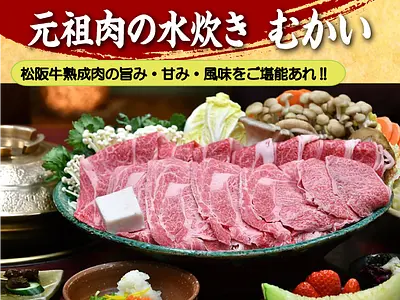Learn the depth of bread making at ``Kyokodo'' (MatsusakaCity), a unique bakery that uses homemade yeast
In a tranquil mountain village in Iinan-cho MatsusakaCity, there is a home-made yeast bakery called ``Xyokodo'' that anyone can eat with peace of mind. The bread made by the owner, Toyomi Takeoka, is unique, well-roasted, and full of filling. We talked about Mr. Takeoka's commitment to food, including his passion for making bread, his love of farming, and his lifestyle of making just about anything. Please enjoy the background behind the creation of one-of-a-kind handmade breads.
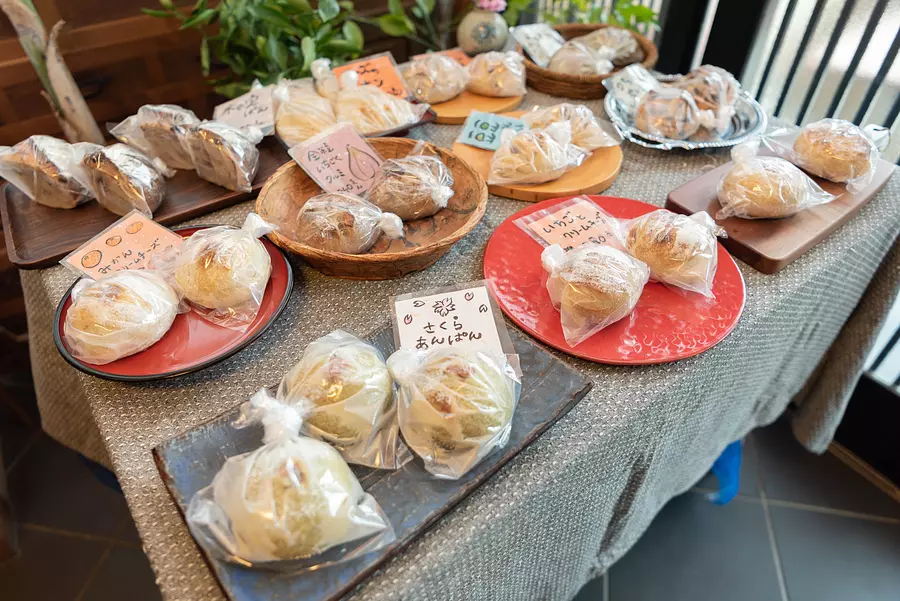
Article production / Mie Travel Gourmet Club Mio Ieda
My name is Mio Ieda and I am a member of the Mie Travel Gourmet Club.
I usually travel around Mie Prefecture as a freelance writer and photographer.
In this third article, we will introduce "Xyokodo" in MatsusakaCity, a bakery that uses homemade yeast.
Actually, I love bread, so I make my own yeast and bake it myself.
So this time, we asked about the bread making at Xyokodou and the shop owner, Toyomi Takeoka's thoughts on food.
▼[Xykondo] Table of contents
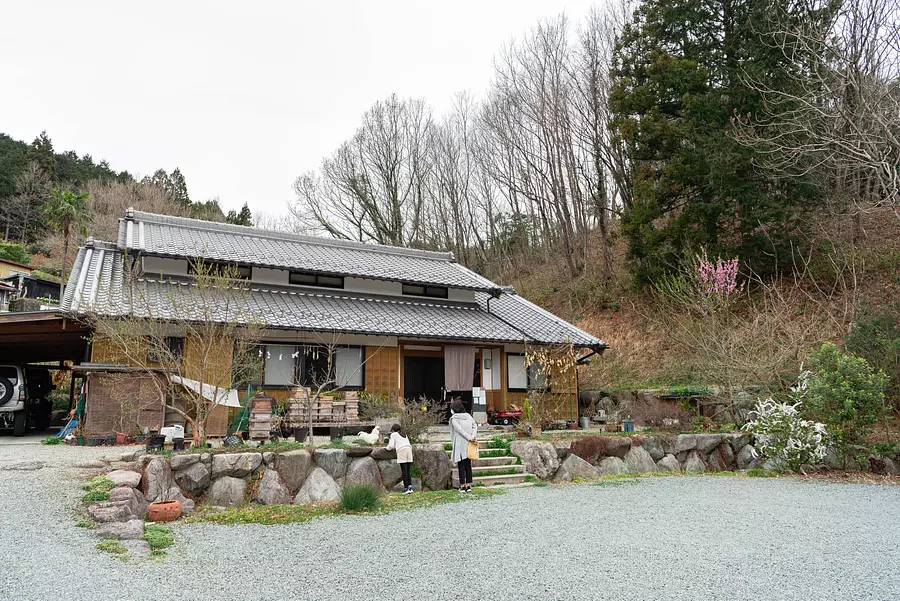
Producing unique homemade yeast bread in a mountain village in Iinan Town
``Xyokodo'' is a bakery that uses homemade yeast, located in a quiet mountain village in Iinan-cho MatsusakaCity.
The owner, Toyomi Takeoka, opened the restaurant here 14 years ago and is open every Friday and Saturday.
The store opens at noon, so we arrived about 15 minutes early, but there were already a lot of people waiting for the store to open.
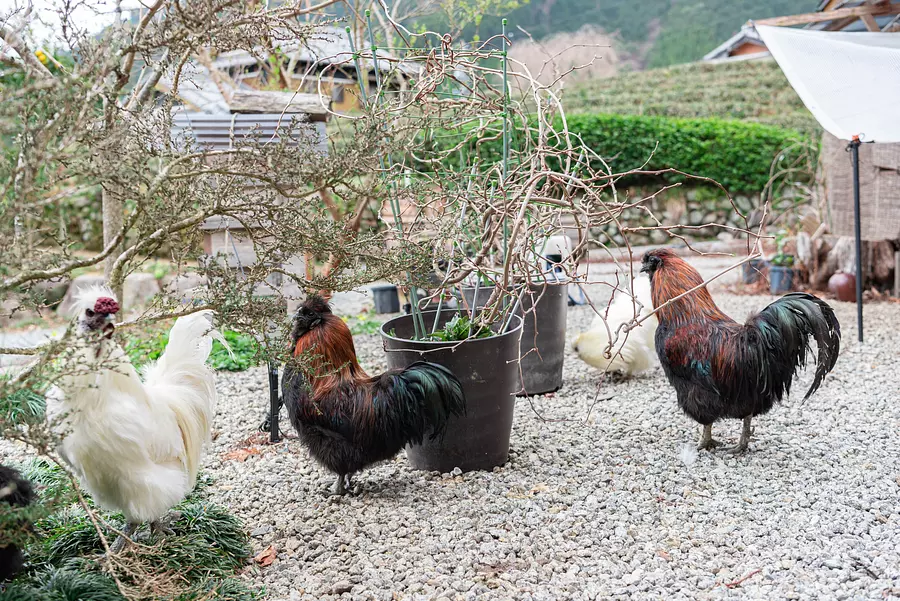
The chickens kept in the garden are a feast for the eyes of these people. Even though we don't have a fence around them, they don't get separated from each other, and they walk around the garden and pick at weeds, making occasional noises. Nodoka.
Just before the store opened, about 10 customers lined up, and the store finally opened at noon.
The bread is lined up in a slightly large area with Sanwa soil right inside the entrance of the house.

Approximately 18 types of bread are being baked on this day, and the customers who visit are able to get their hands on the bread they want one after another.
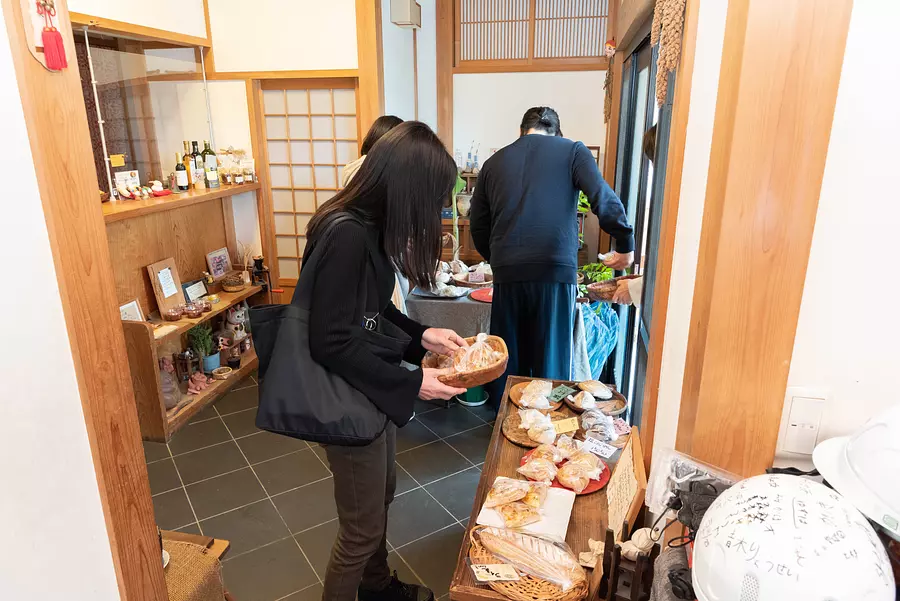
Mr. Takeoka, who also serves customers by himself, is very friendly, communicating with regular customers about what's going on, and explaining to first-time customers how to eat delicious bread. In order to build a good relationship of trust with their customers, you can feel that they are concerned about their bread being delicious above all else.
Sales were particularly good on the day I visited, and everything was sold out by around 12:30. Very popular!
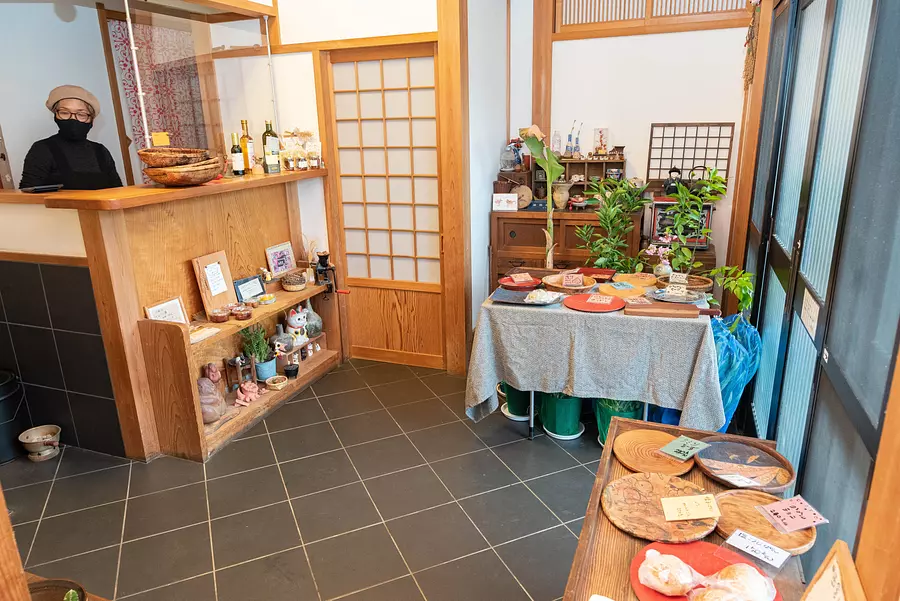
“It’s not just days like this.”
Mr. Takeoka says humbly, but when I came to buy bread in the past, there were customers lining up even before the store opened, so if you want to be sure to get your bread, it might be a good idea to visit when the store opens.
There was no bread lined up at the store, but the store was still open and customers were coming in one by one to pick up their reserved bread.
If you know what kind of bread you want, or if you want to leave the type of bread up to you, it's best to make a reservation by phone in advance. If you want a bread that is not normally available in stores, such as ``50% rye bread,'' you can have it made specially for you if you contact us by noon the day before.
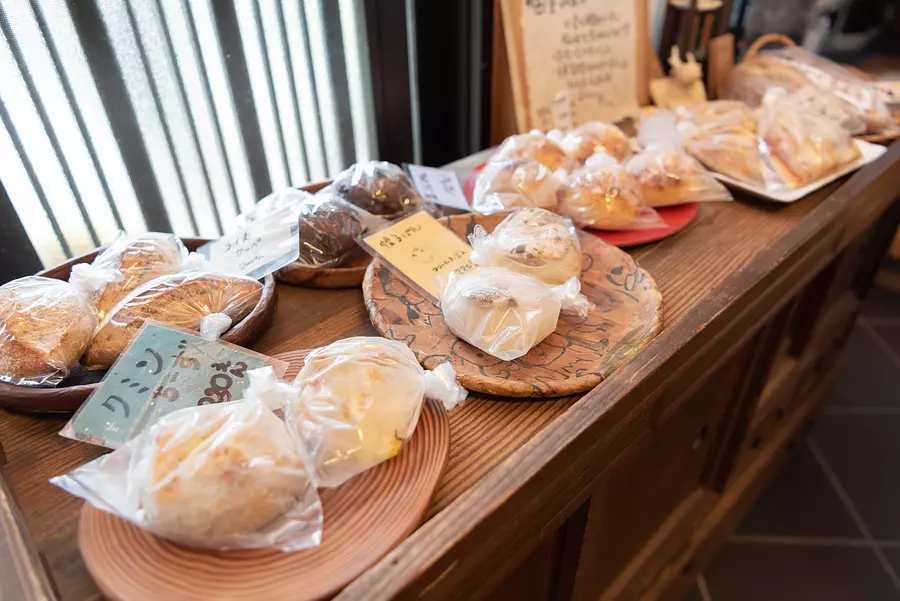
I'd like to introduce you to the bread I bought!
I also bought some bread, so I'd like to introduce it here.
The first photo, clockwise from the top left, is the 240 yen ``fig and walnut whole wheat bread'' whose aroma of whole wheat goes well with dried figs and walnuts, and the delicious ``fig and walnut whole wheat bread'' with the sweetness of strawberries and the aftertaste of cream cheese. "Strawberry Cream Cheese" 240 yen, "Nut Bread" with plenty of dried fruit and nuts 270 yen, and "Sakura An Bread" 240 yen, with a white bean paste that has a lot of bean flavor and the saltiness of salted cherry blossoms as an accent.
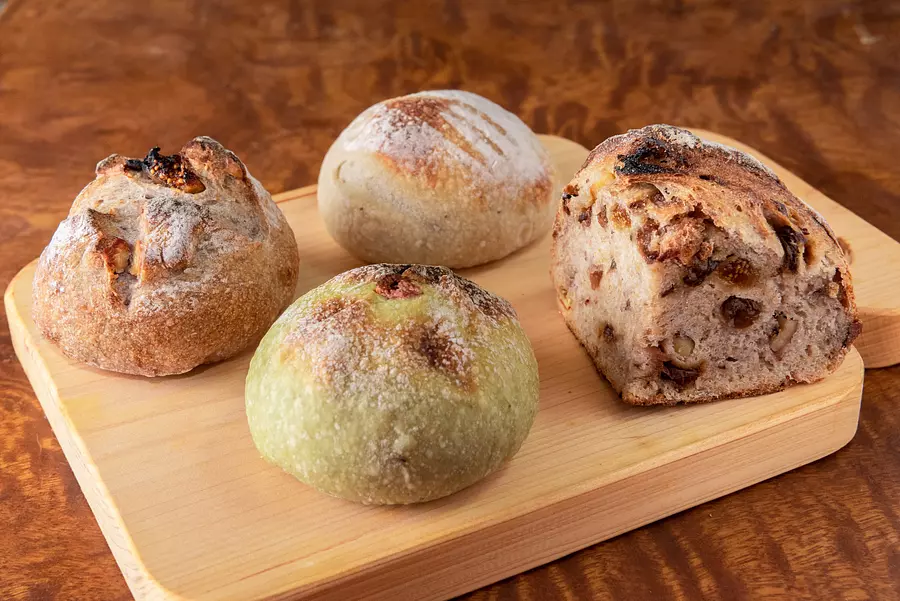
All of the bean paste for the anpan is homemade, including the red bean paste made from Hokkaido-produced red beans and the white bean paste made from kidney beans, which are mildly sweet and rich in the flavor of the beans. Salted cherry blossoms are also handmade every year during the cherry blossom season.
The second one is ``rye cuppe'' for 200 yen, ``apple and cinnamon bread'' for 240 yen, and ``salt and koji bread'' for 150 yen.
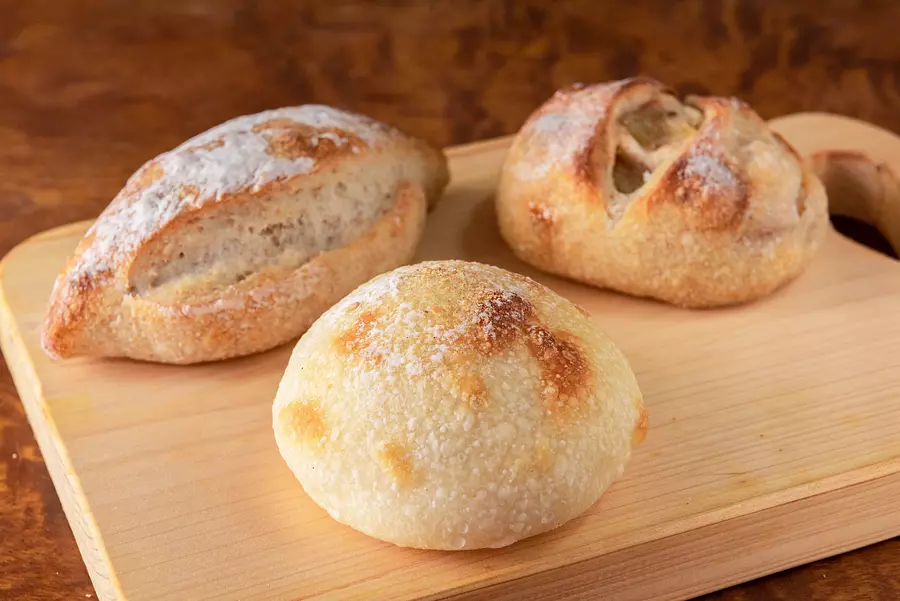
The cuppe, made with 20% rye, has a strong flavor from the dough itself. Apple and cinnamon bread is sweet and makes a nice snack. The salt and koji bread is a plain and delicious substitute for white rice.
So, if you are a bread lover, please take a look at the cross-sectional photos of the breads that are of particular interest (left: strawberry cream cheese, right: cherry red bean paste). You can see the puffy dough and the white bread with crumbs of beans left behind.
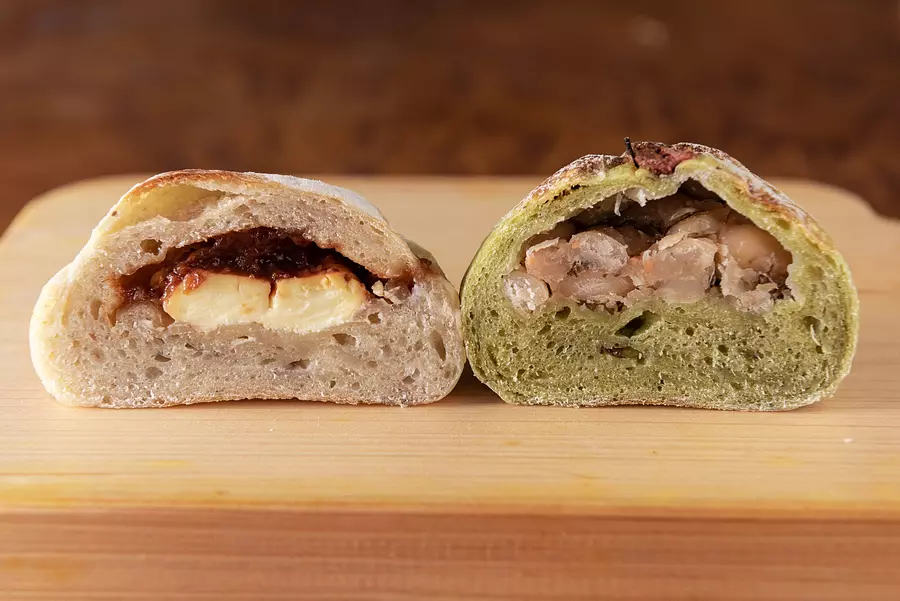
Takeoka's bread is made with homemade yeast, domestically produced wheat flour (Haruyo Koi) and rye flour that does not require post-harvest, natural sea salt rich in minerals, and organic nuts and dried fruits whenever possible.
We do not use eggs, milk, butter, white sugar, shortening, or yeast so that many people can eat it with peace of mind.
The well-brown bread is packed with filling and is very satisfying to eat. It's a hard bread that tastes better the more you chew, and the breads are full of character, with some fans coming from outside the prefecture and saying, ``This is my favorite bread.''
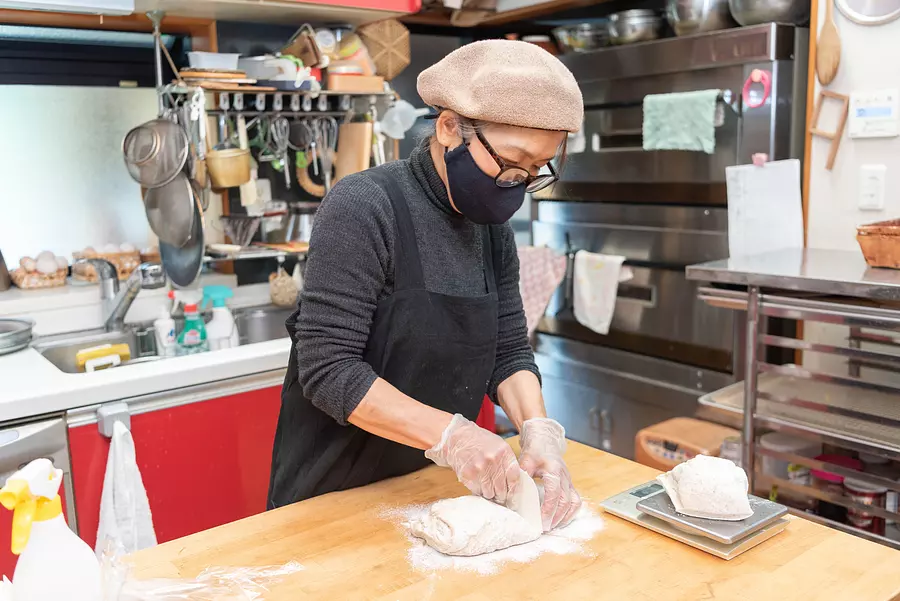
Sneak into the shop owner's bread manufacturing site!
This time, Mr. Takeoka kindly allowed us to see the production site of the bread that will be sold the next day. I also make bread, so I was curious and visited the kitchen.
The kitchen looks like a typical home, but the commercial oven that has been installed is eye-catching. This oven was originally used in the cafeteria of a hospital in MinamiiseTown, and was given to them when the hospital closed down.
To bake bread with such a deep brown color, you need a commercial oven with strong heat.
Now, let me show you how to knead the bread dough.
Mr. Takeoka says he has all the recipes in his head. Without looking at notes, he skillfully measures and mixes the ingredients, but to my surprise, all of Takeoka's breads are made by hand!
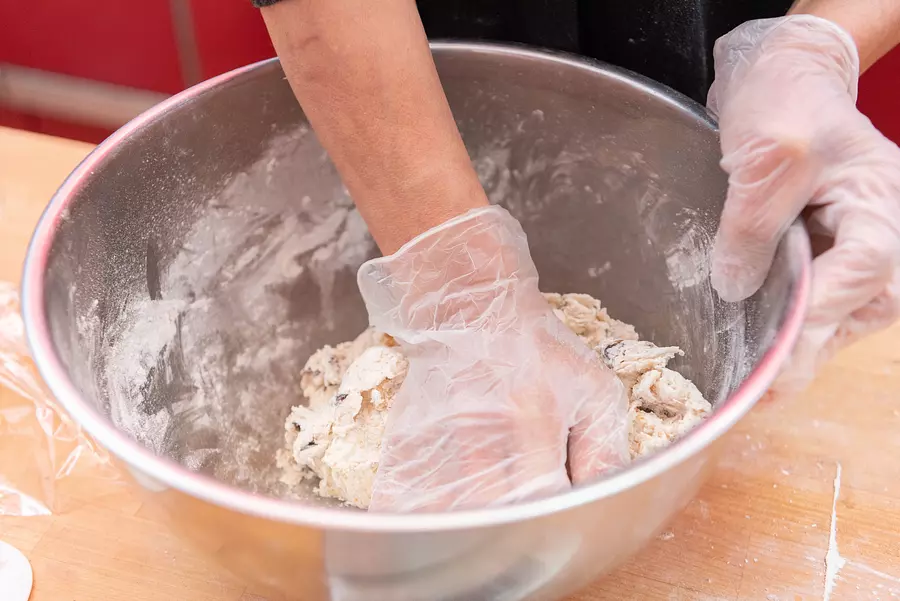
Generally, bakeries use a special mixer to knead the dough, but ``I can get a better sense of the condition of the dough by kneading it by hand,'' so he continues to knead it by hand. We use our years of experience in making bread by changing the water temperature depending on the weather, temperature, humidity, etc. of the day.
Once the dough has come together in the bowl, take it out to the work surface and knead it vigorously. It is a very physically demanding job that involves kneading many different types of dough by hand.
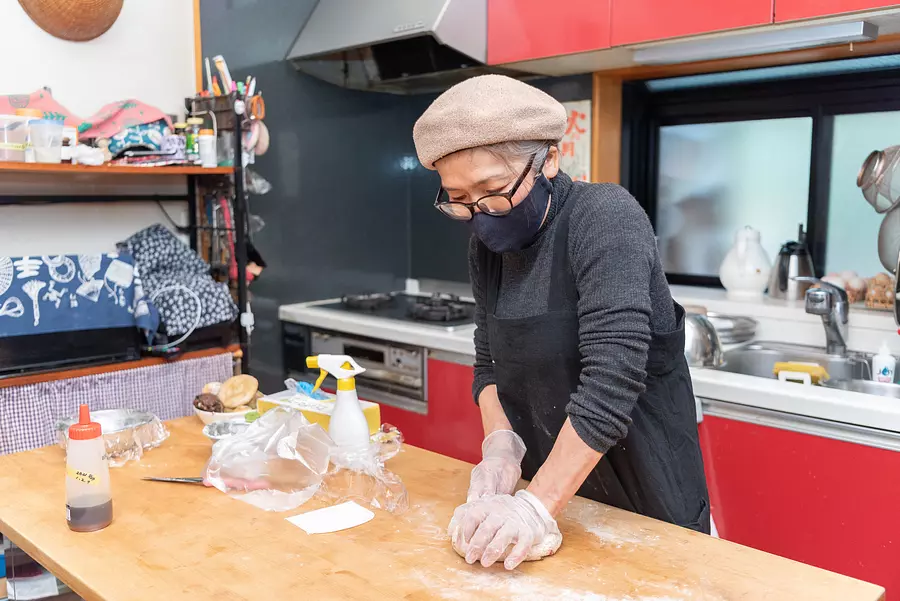
Now you have a strong dough. From this point, primary fermentation takes about 8 to 10 hours.
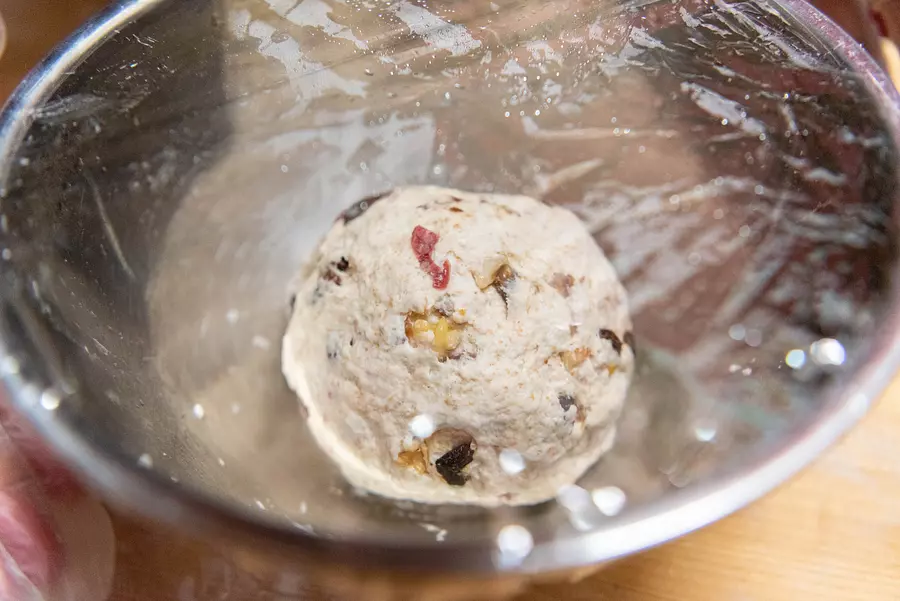
Bread made with homemade yeast has a weaker fermentation power and takes longer than bread made with yeast specifically made for bread, but it also produces by-products such as lactic acid bacteria, making it more complex and unique in flavor.
Mr. Takeoka has been using yeast made from wheat flour, so-called ``levain'', from the time he opened his shop. When he was baking bread as a hobby, he used seasonal fruits to make various types of yeast, but he uses Levain yeast, which can be used consistently regardless of the season, at his shop.
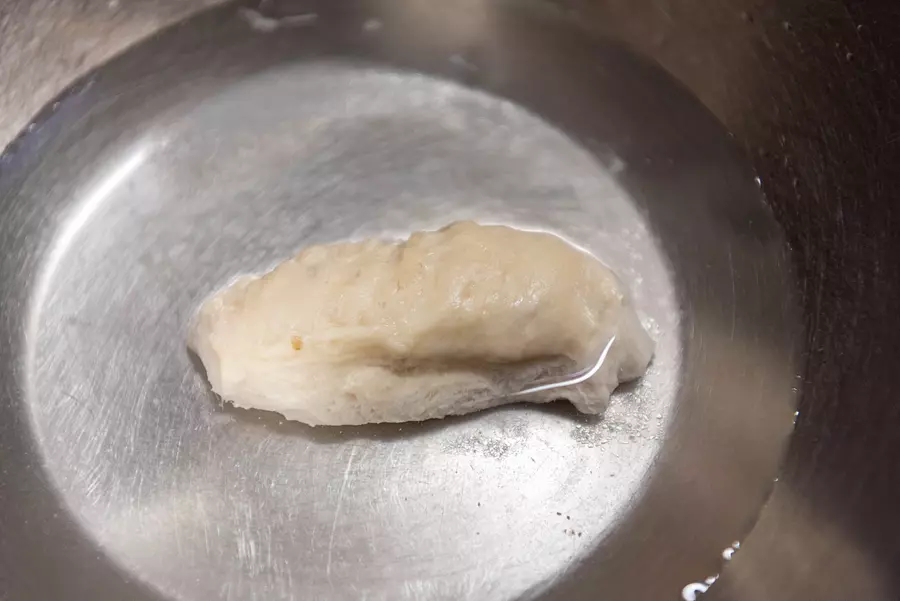
Next, we will look at the bread forming process.
The dough containing rye is measured, cut into pieces, and shaped.

"I've never learned how to make bread, so I don't know if this is the correct way to make bread. It's embarrassing," Takeoka says with a laugh.
Before opening his own bakery, he taught himself to make bread for about 10 years, but experienced many failures there. By thinking about the cause and looking for ways to explain it, he was able to make the bread he wanted to make.
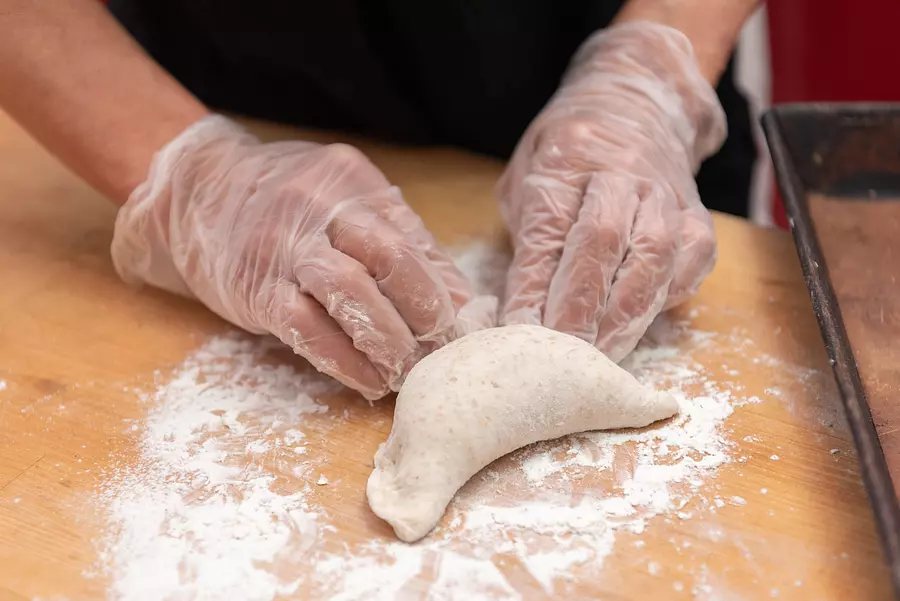
``It's fun to think about it and make it that way,'' she said about the appeal of making bread.
We listened to the story about how long it takes to put the shaped bread into the fermenter and wait for the secondary fermentation to finish.
Mr. Takeoka has always loved agriculture. I used to work as a childcare worker, but when I decided to get serious about farming, I decided to open a bakery because I wanted to do a job where I could interact with people.
Currently, he grows enough crops for his family to eat using pesticide-free, fertilizer-free, and no-till agriculture. Furthermore, Mr. Takeoka's commitment to delicious food is wide-ranging, as he makes his own soy sauce, miso, pickled vegetables (pickled plums, pickled radish, pickled Chinese cabbage, and pickled vegetables in Narazuke), and even collects honey through beekeeping.
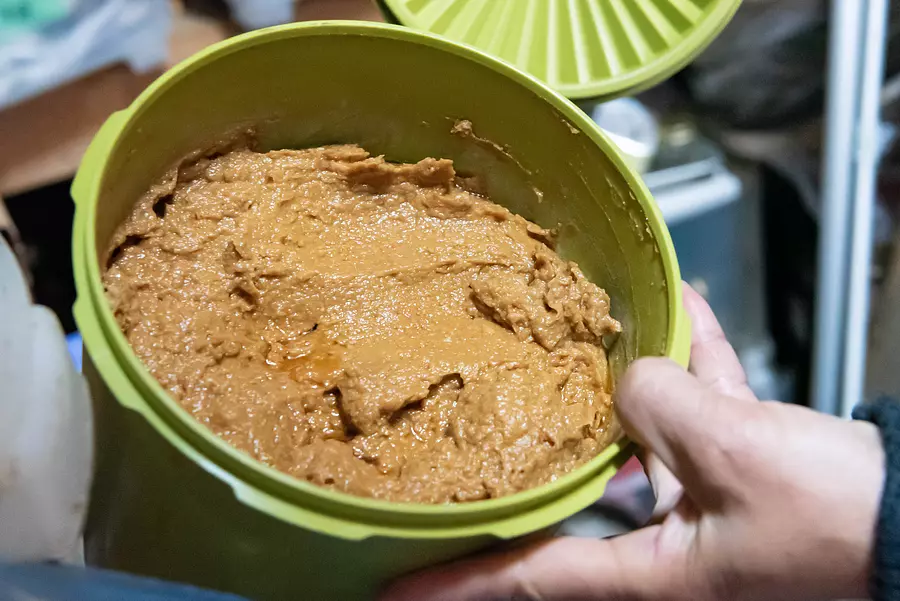
``This is also pesticide-free tea,'' he said, and we enjoyed the green tea, homemade Narazuke made from chayote grown in the field in front of us, and rye bread. The green tea has a very gorgeous aroma and gentle taste, and I couldn't stop eating it while being surprised by the surprisingly good compatibility of the narazuke and rye bread.
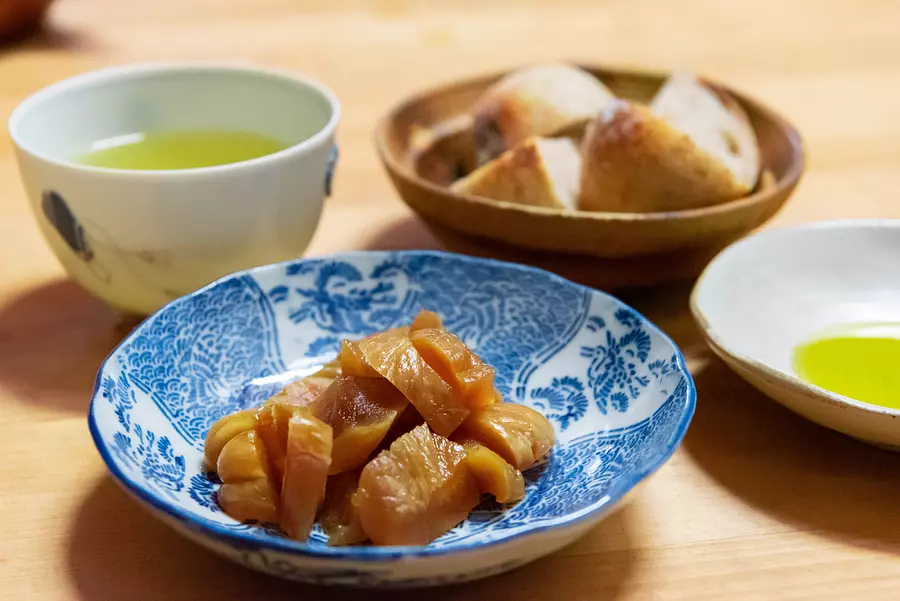
After that, I started using Shiitake mushrooms that I grew from logs (I was in the process of making dried Shiitake mushrooms), fresh eggs from the ducks and chickens that I keep in my garden, miso that I planted three years ago, and growing vegetable seedlings that I picked myself. I was impressed by Mr. Takeoka's lifestyle.
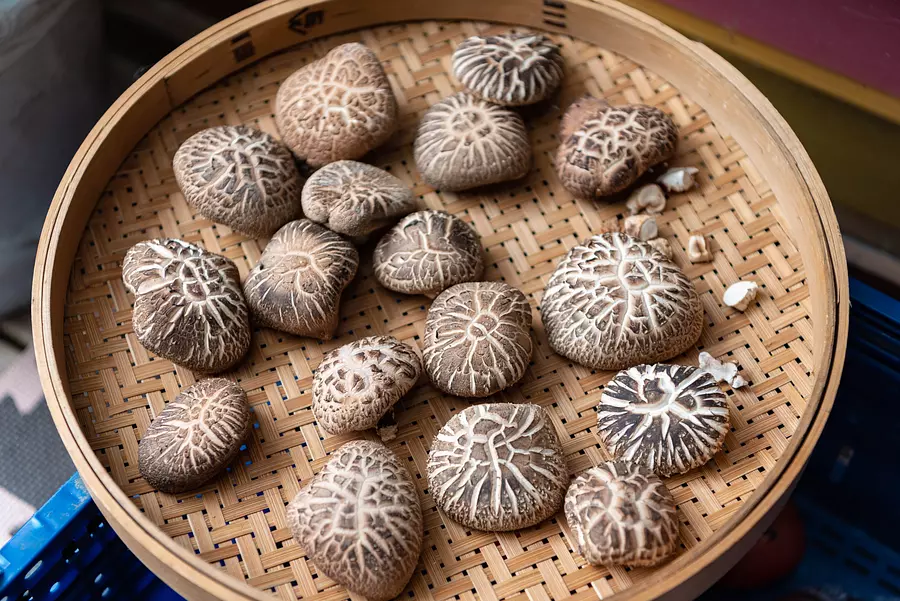
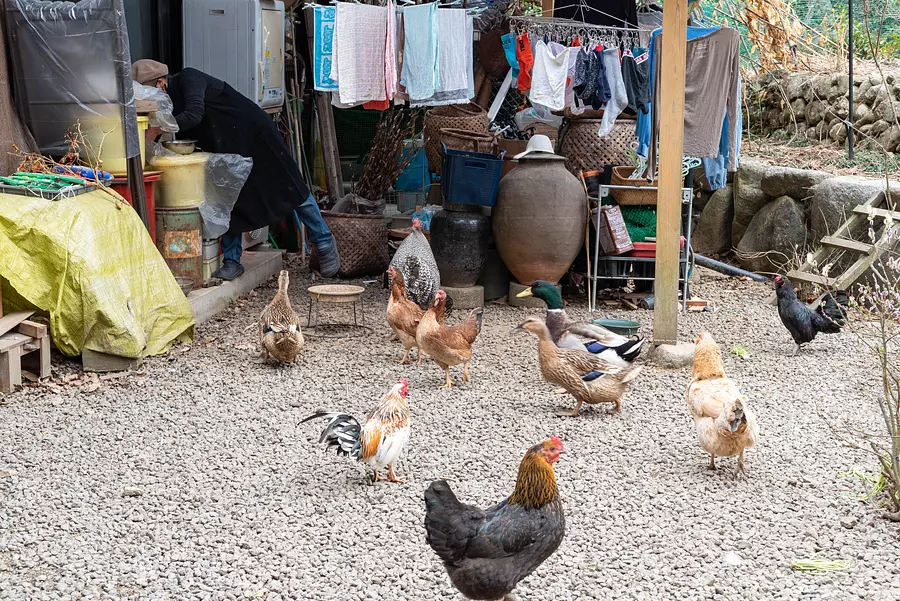
``I'm a very fidgety person, so once I start getting fidgety, I can't stop,'' she says with a laugh. No, it's amazing! !
While we were exchanging information about our favorite bakeries, we finally finished the secondary fermentation of the rye bread.
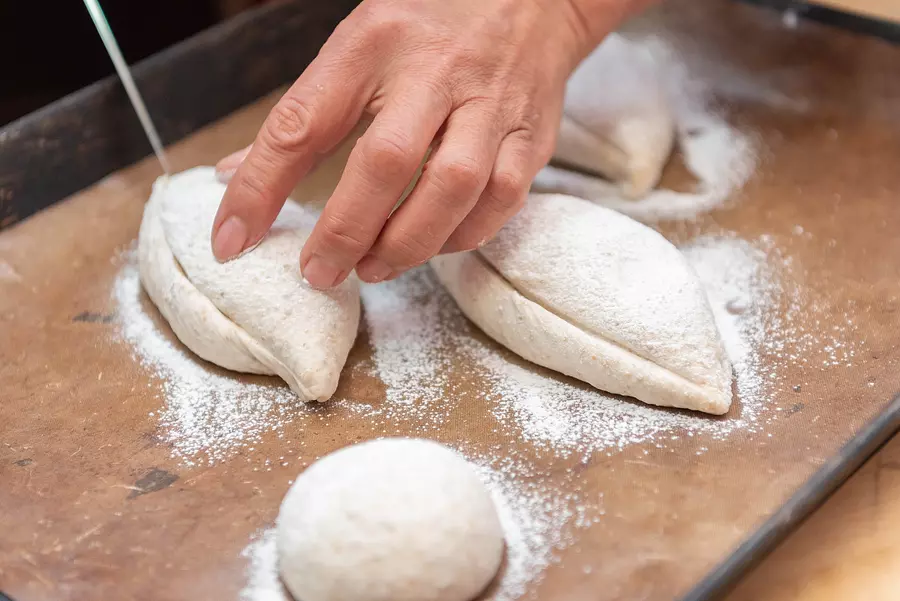
Carefully and skillfully make a coupe (slit) and put it in the oven. He shows a lot of love for his bread, watching it baking through a small window and carefully adjusting the temperature.
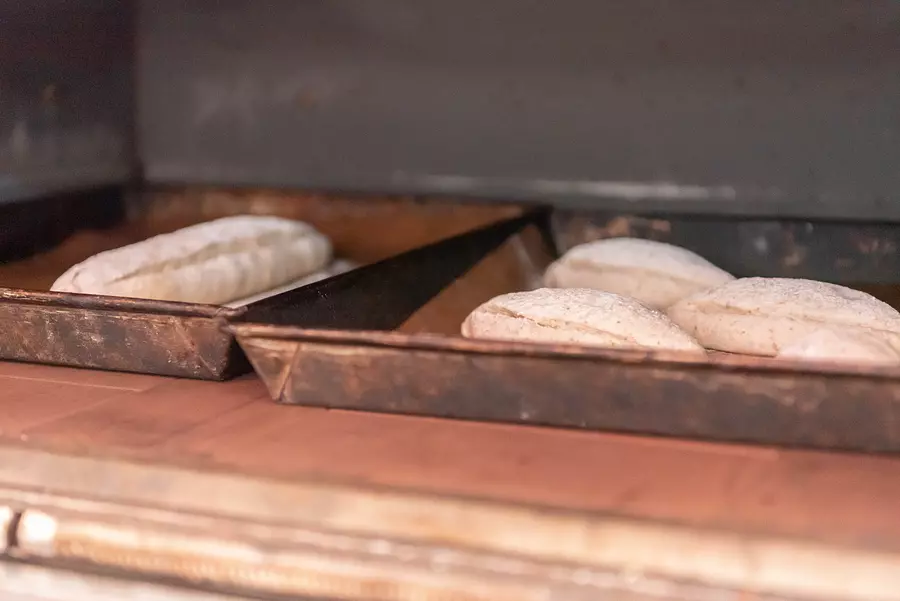
Baked bread has a very nice aroma. The crispy crust (skin) is aromatic, and the plump crumb (inner layer) has a rustic rye flavor, and yet it has a wide-ranging flavor that will appeal to anyone who eats it.
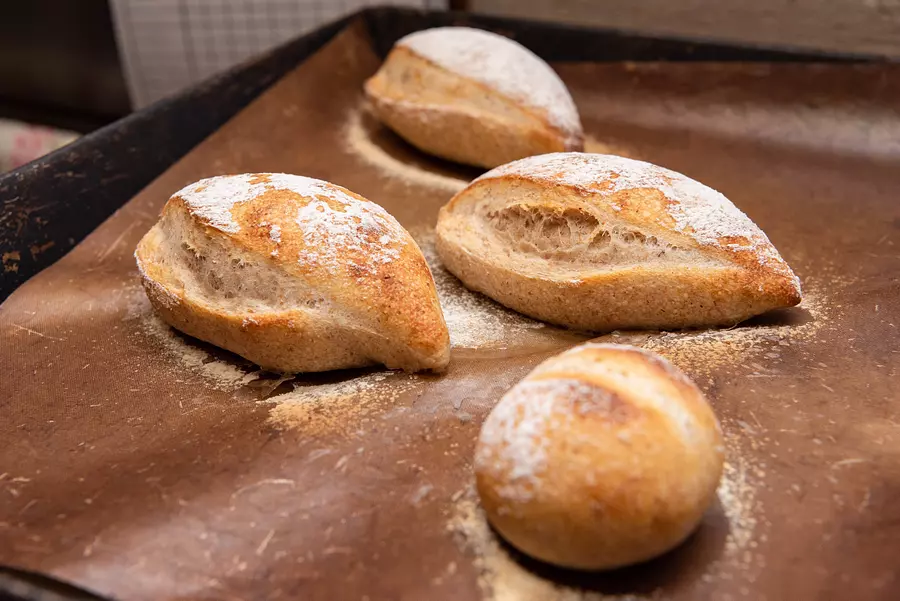
``The fun thing about making homemade yeast bread is that even if you don't add anything, the invisible microorganisms help it rise and make bread.Since you're dealing with microorganisms, it's also interesting that things don't turn out the way you want them to.If you pursue your ideal, There is no end to this, so I will continue to train.”
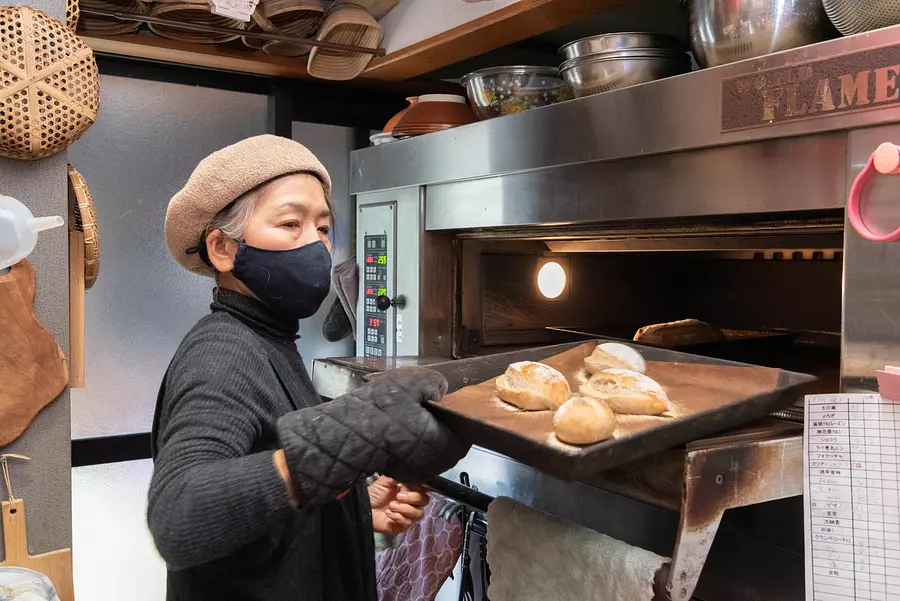
As long as circumstances allow, she will continue to make bread that she likes and that her family can eat with peace of mind.
There are various bread booms such as melon bread, high-quality bread, and maritozzo, but we would like to continue to support unique and unique breads that stand out from the trend of the world, and we would like to do this interview. I felt it strongly.
And I too was inspired by the desire to make bread that is rooted in daily life.
Thank you, Takeoka-san.
Xyukindo business information/access/map
[Address] 663 Yokono, Iinan-cho MatsusakaCity
【電話番号】 090-5455-2314
[Business hours] 12:00 until sold out *Subject to change
[Business days] Friday, Saturday
[Access by public transportation]
・From Matsusaka Station, take the Mie Kotsu Bus Iinan Hase Line and get off at the "Kakino" bus stop, then walk for about 10 minutes.
[Access by car]
・About 35 minutes from Matsusaka Station via National Route 166
[Parking lot] 6 spaces
Click here for official Facebook
Click here for official Instagram
| Category | |
|---|---|
| season | |
| area |

